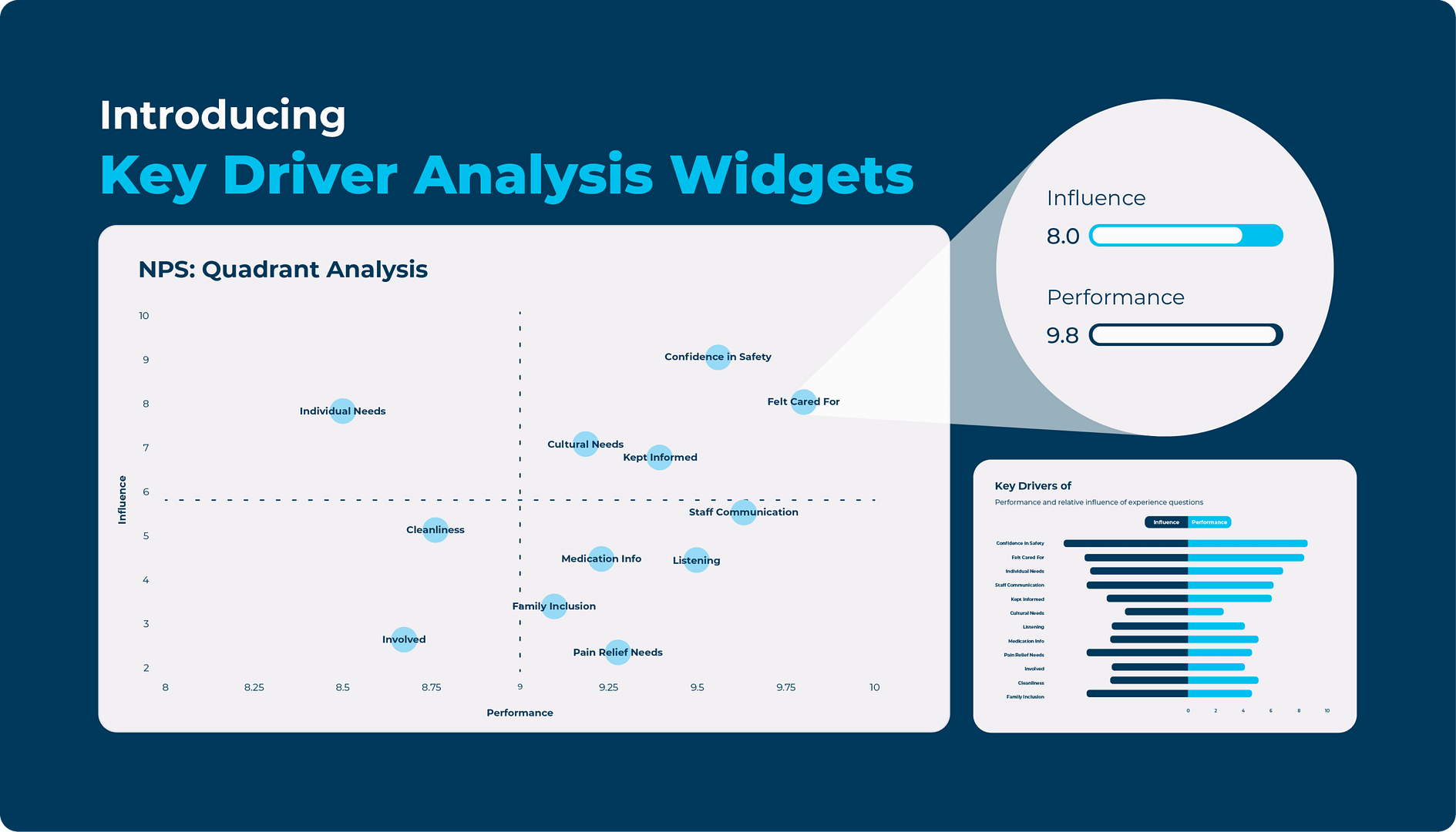What is Key Driver Analysis?
Key Driver Analysis (KDA) pinpoints the factors measured in a survey that most influence a headline patient-reported metric—typically Net Promoter Score (NPS), Overall Quality of Care, or a clinically-validated Outcome measure. By quantifying these relationships, KDA shows healthcare organisations where to focus improvement efforts to deliver the greatest impact on patient experience and outcomes.
At its heart, KDA applies statistics and decision science to patient-survey data to separate the “signal” (drivers that truly matter) from the “noise”, and how to prioritise them. In the patient-reported world, those drivers might include being treated with dignity and respect, clarity of information, shared decision-making, symptom management, family involvement—anything the patient is asked to report through a carefully designed questionnaire.
Why KDA in Healthcare is Uniquely Powerful?
Modern Patient-Reported Experience Measures (PREMs) are built on decades of evidence about what patients value most. That evidence, validated through Key Driver Analysis (KDA) and other rigorous statistical techniques, has shaped survey questions that consistently capture the core elements of care across settings.
Likewise, Patient-Reported Outcome Measures (PROMs) are psychometrically validated to ensure each item accurately reflects a patient’s health status and treatment results.
Because this global research base already pinpoints the right things to measure, every programme starts on solid ground. We can then apply our relative-weights KDA to each client’s data to set precise, patient-specific priorities.
Key Drivers Explained
- Key drivers are the independent survey questions or items that exert the strongest influence on your lead indicator (NPS, Overall Quality of Care, or a specific Outcome measure).
- They are actionable levers. Knowing their relative impact helps you prioritise initiatives—for example, redesigning appointment scheduling if access proves to be the top driver of NPS.
Examples of Outcome & Predictor Variables
| Category | Examples in a Patient Context | Notes |
|---|---|---|
| Outcome/ Dependent Variable | NPS, Overall Quality of Care, PROM-based symptom score. | The choice of Dependent Variable can lead to quite different impacts. It’s important to be clear about the purpose of your analysis so that the right Dependent Variable is selected for analysis. |
| Predictor/ Independent Variables (Drivers) | E.g. Ease of getting an appointment, clarity of discharge instructions, perceptions of empathy, wait-time, coordination of care. | Most Cemplicity surveys are designed around Independent Variables that are known to be important. |
| Exclude Variables | Low response variables. | Some variables have low response numbers (such as “Experience unexpected harm during your stay”). These must be excluded to ensure valid model results, but some may be critically important to the patients that answered them and it is essential to monitor them. |
Three Important Considerations
When reviewing your KDA results there are three important factors to bear in mind.
- Questions relating to patient safety like pain and explaining the side effects of medications are usually under rated for importance compared to other factors. However, because of the clinical importance of these items they must always be a priority.
- Some items may be ranked as low in relative importance because you are doing them well. For example, if your team consistently show respect for people’s cultural needs they may take this for granted. Stop doing this and it may quickly become more important!
- Every organisation has its own mission and culture. Sometimes you’ll want to continue to focus on an aspect of care, irrespective of patient feedback, because it is core to your organisational values and how you distinguish yourself from other providers.
Turning Insights into Impact
Key Driver Analysis is not just a statistical tool—it is a strategic compass that empowers healthcare organisations to navigate the complexity of patient feedback and prioritise what truly matters. By moving beyond intuition and anecdote, KDA translates patient-reported measures into a clear roadmap for targeted, high-impact improvements.
But insight alone is not enough. The next frontier is action. KDA thus becomes more than analysis; it becomes a catalyst for better care, stronger outcomes, and a patient experience that is not only measured but meaningfully improved.
In an era where healthcare is both increasingly data-driven and deeply human, Key Driver Analysis bridges the two—illuminating the path from patient voice to measurable value.


